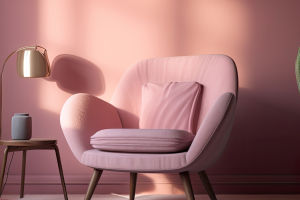Perfect Your Living Room
The living room serves as a home's social and display hub, making furniture selection critically important.
Whether it's the sofa, coffee table, or TV stand, each piece should be both beautiful and functional to create a cozy, inviting space.
Here are six key considerations for selecting living room furniture to help you design your ideal living area.
1. Define the Layout
Before choosing furniture, it’s essential to understand the layout and dimensions of your living room. Measure the width, length, and height accurately to plan the placement of each item.
For instance, a smaller living room may benefit from compact, lightweight furniture, while a larger space can accommodate a sectional sofa or an extendable coffee table. A clear layout prevents furniture from being too large or too small for the space and enhances overall functionality.
2. Focus on Functionality
Functionality is a core factor in choosing furniture. Consider the comfort of the sofa, the storage options of the coffee table, and the TV stand’s capacity for organization.
Opt for multi-functional designs where possible, such as a coffee table with storage or a sofa with hidden compartments, to keep your living room tidy. If you have a large family or frequently entertain guests, consider furniture with expandable features, like a pull-out sofa bed, for added convenience.
3. Consider Durability
Given the high level of activity in the living room, the durability of materials significantly impacts furniture longevity.
Choose high-quality solid wood, metal, or high-density board materials for better wear resistance. Leather or fabric sofas each have their benefits: leather is easier to clean, while fabric offers a broader range of colors and patterns. Select a material based on personal preference and the room's expected usage frequency.
4. Coordinate with Style
Furniture colors and styles greatly influence the living room's atmosphere. Choose pieces that align with the primary color scheme and decor style.
For a modern, minimalist room, opt for soft, neutral colors like white, gray, or light blue, while darker, distressed materials work well for vintage or industrial themes. Ensure that the furniture colors complement the walls, floors, and accessories to create a cohesive look that enhances the room’s visual appeal.
5. Ensure Comfort and Safety
Comfort is a vital standard, especially for sofas and chairs, which impact daily experience. Try seating options in person to ensure they’re soft or firm enough for your liking.
Pay attention to the design of furniture edges, particularly if you have children or elderly family members; rounded edges are safer and help prevent accidental injuries. Additionally, the structural stability of furniture is essential to avoid tipping or shifting unexpectedly.
6. Consider Value for Money
Lastly, choose furniture within your budget that offers a good balance of quality and price. There can be significant price variations across brands, materials, and features, so research and compare options beforehand.
Rather than focusing solely on low-cost or premium brands, look for durable and functional pieces that fit your needs. It’s wise to allocate most of the budget to core furniture items to ensure each piece serves its purpose effectively.
When selecting living room furniture, key considerations include layout, functionality, durability, style, comfort, and budget. We hope these six points provide valuable guidance in designing your living space and achieving your ideal home setup effortlessly.


